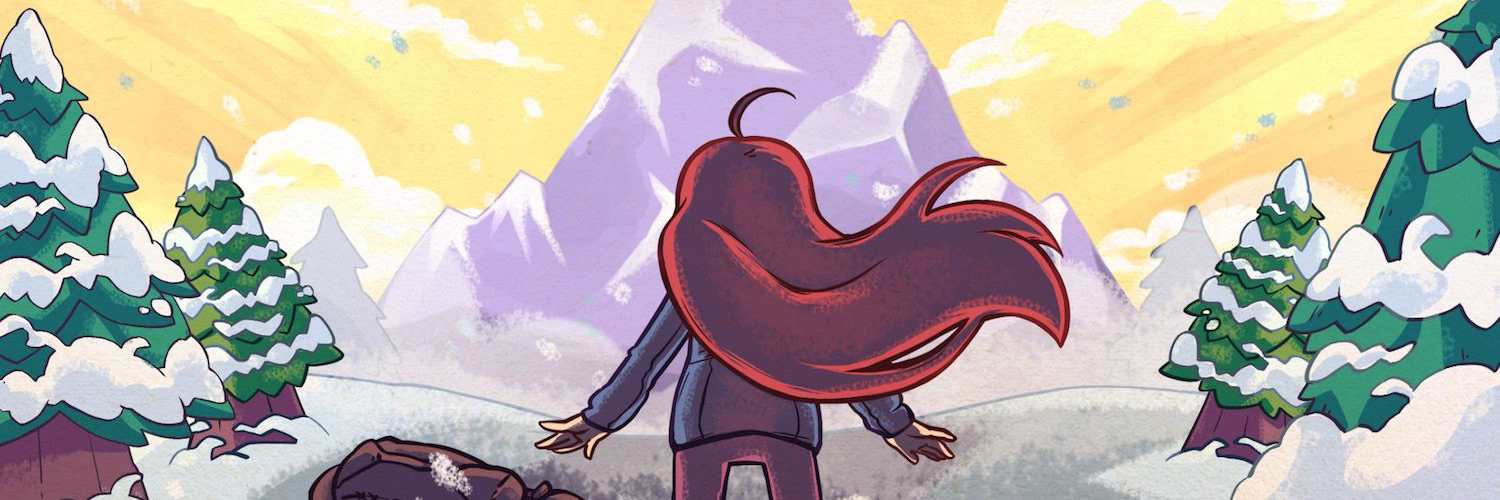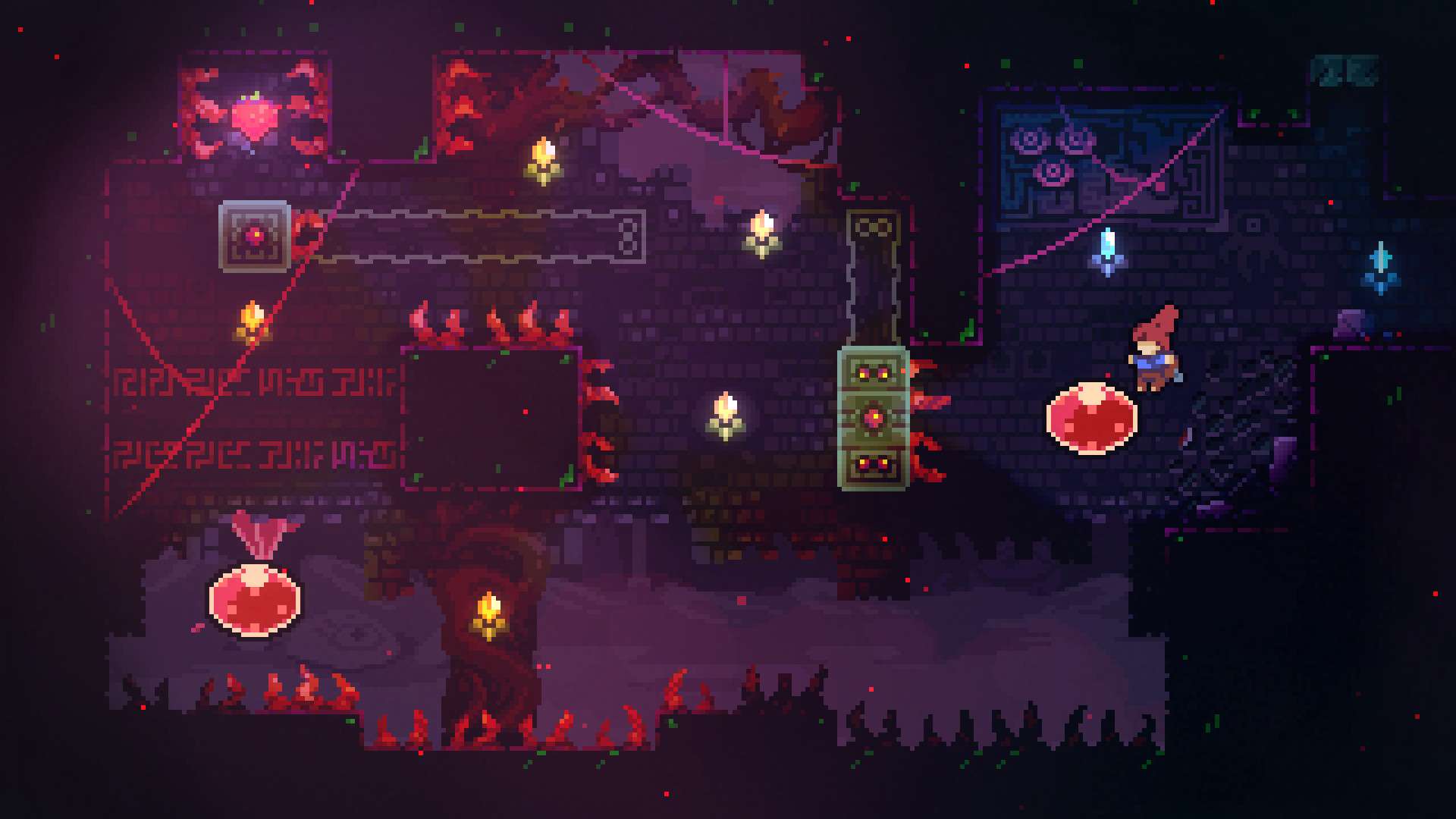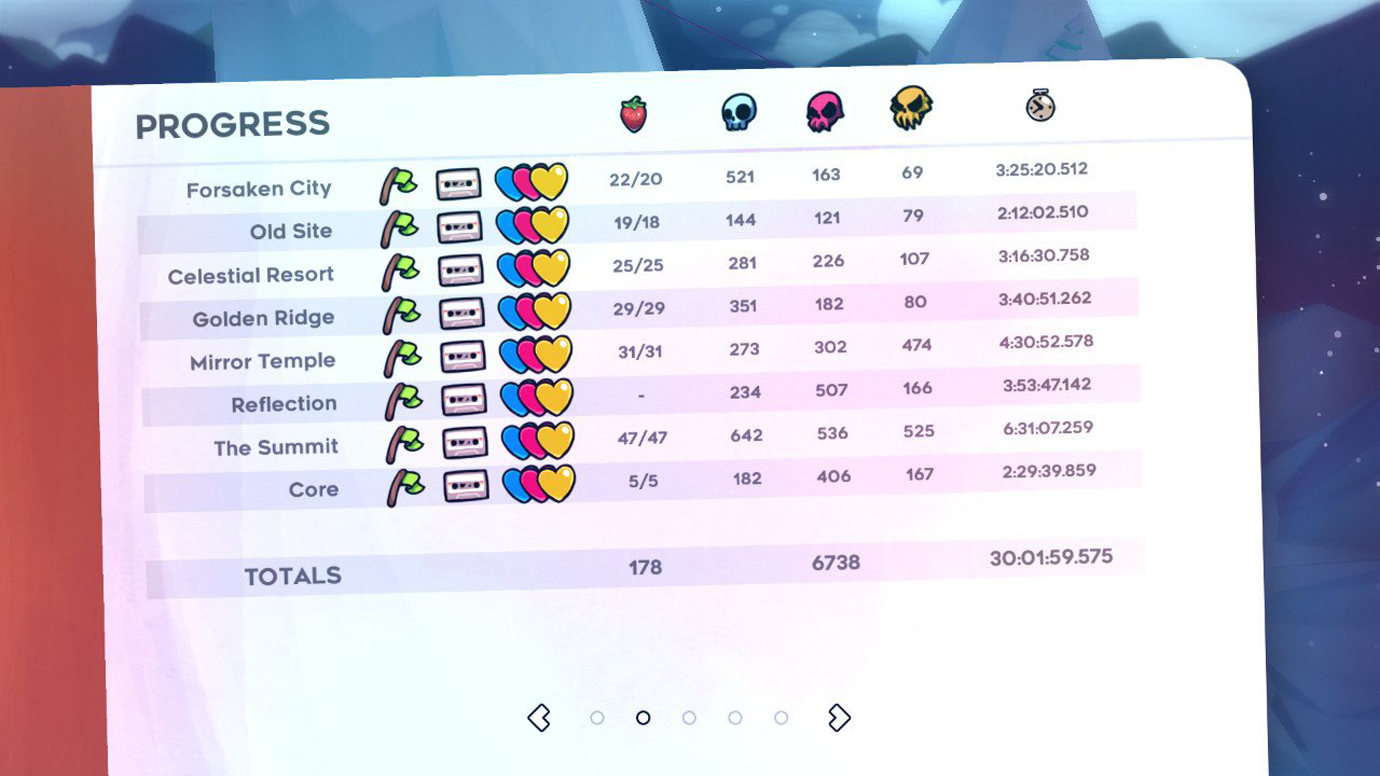
Celeste Switch Review
I was a massive fan of Matt Thornson’s (Celeste’s director and game designer) previous title, TowerFall, and its expansions. I played that gem for hundreds of hours across every available platform, including on the OUYA where it was originally released. I loved the single-player challenges and story modes as well as, probably most importantly, VS mode; but what it really did to hook me is simply feel incredible to control. Every bit of movement, from wall-hopping to advanced techniques like dash-cancel jumping, feels so right with regards to the sense of timing and leeway it affords, whilst still remaining heavily execution and skill-based. Well, Celeste is no different – it’s a 2D platformer where the mobility and controls are what I would honestly consider perfect, and I don’t use that word lightly. From the outside it may seem that all the player can do in Celeste is the usually moving, jumping, and dashing, as well as a grabbing and climbing mechanic for vertical surfaces (that uses a stamina system) but actually these simple options are deceptively deep. Not only are they expanded with game mechanics, such as gems that reset the players’ air dashes so they can be used again and again for larger traversal sections, but they are also just generally designed in a way that allows them to be manipulated by the player using more advanced techniques.
For example, just jumping away from a wall can be done in numerous ways, all of them yielding different results in distance, height, and stamina usage. Heck, with enough practice and spot-on inputs, there’s even ways to climb vertical surfaces without using stamina at all. What really blew my mind though, was being introduced to a new movement mechanic (and having it push the player to their absolute limit) not only at what I thought was the end of the post-story content, but being shown yet another one even after that – at the true end of the game which took about another 15 hours to even get to. And I’m sure it’s by no coincidence that this final reveal seems to be a great speed-running tool. These mobility options aren’t unlocked or upgraded, however – they are there all along, just waiting to be discovered, and are made possible due to the amazing flexibility of the controls. I would say I’m not sure how they managed to do this but that’s no longer true because the team actually released the entire source code of Celeste’s ‘Player’ class, seemingly just to appease curious fans – a wonderful act of good grace.

All this praise for how Celeste plays and I haven’t even touched on the actual gameplay or the different areas that Madeline, the protagonist, reaches as she climbs Celeste Mountain. It’s a bit more of an open platformer, within each self-contained chapter, than many might expect. Outside of the occasional semi ‘chase sequences’ or the later secret stages, that are mostly traversal based, the player is allowed to often roam free around the current area before choosing to move on, with each new screen being some kind of platforming test or puzzle. This openness gifts the player with a lot of freedom to not only experiment and learn the new mechanics introduced in each chapter but also to search for collectible strawberries; that are usually received upon finding hidden areas or by completing mini-trials to reach them, and other, more lucrative, secrets such as B-side tapes and crystal hearts, which unlock extra levels and are required to progress to the games true ending challenges. Of course, the ever-steepening difficulty curve and interesting obstacles such as thwomp-esque blocks; that can be manipulated to smash obstacles, or the space-looking blocks; that allow Madeline to keep her current trajectory as she boosts through it, aren’t the only things that each new chapter boasts.
The wonderful environments continue to delight with their awesome pixel-art designs, the soundtrack of every stage is a masterpiece in its own right, and as we move on, running into a handful of lovable characters, we learn more and more about Madeline and her reason for climbing the mountain, all the while being chased by her inner demons (literally). And that’s what makes Celeste so special – not only is the gameplay absolutely incredible but it also delivers creatively, with a heartfelt story that I never expected, as well as with graphic and sound designs that are, simply put, works of art. And it never lets up. In fact, it actually ramps up towards the end of the story, with a moment that I don’t want to spoil here, but that will stay with me for a long time. What really hits home is how this one, beautiful, story moment is actually reflected in the gameplay in a way that seriously affects both Madeline and the player. The only thing I can even think to compare it to is the ending of Brothers: A Tale of Two Sons, where the player is forced to use a core gameplay mechanic differently in order to reflect the changes that have occured in a character. It’s a deep and truly stunning moment that pulls the entire experience together.

Even from an objective standpoint, I honestly can’t think of a part of Celeste I didn’t like. Not in the gameplay. Not in the design. Not in the difficulty (although I’ve seen many people complain about how difficult it gets, I found the instant respawning and screen-based challenges absolutely fine. After all, there’s only one’s self to blame with such masterful controls available). It’s a game that was clearly tirelessly tested and tweaked by a team that undoubtedly love it. The amount of content alone, especially consider it’s £14.99 price, is astonishing as I kept thinking I was nearing the end only to discover more secrets, more challenges, more everything. It’s the first time in a long time that I just couldn’t put a game down and when I was forced to I couldn’t wait to go at it again, even after hours of failed attempts of some of the insane end-game sections. My hands actually hurt from gripping the Switch but I couldn’t stop, and when I finally landed on the other side of one of the many gauntlets that Celeste wears like a medal, I felt both relief and curiosity as to what it would throw at me next. It’s a rewarding experience and a game that I’m honoured to issue a perfect score.

